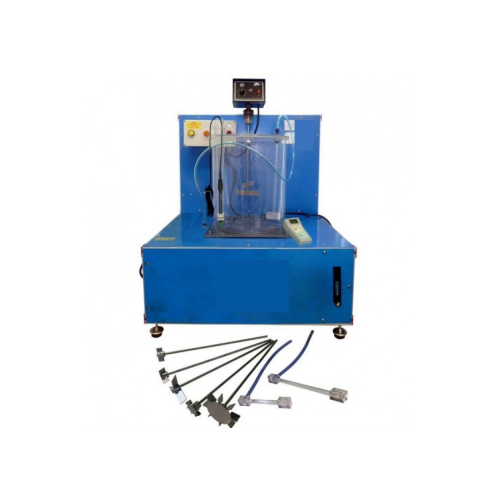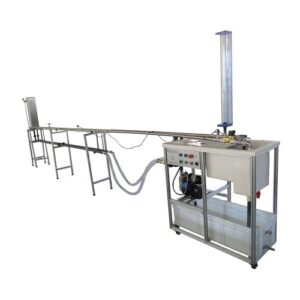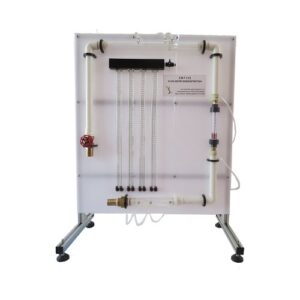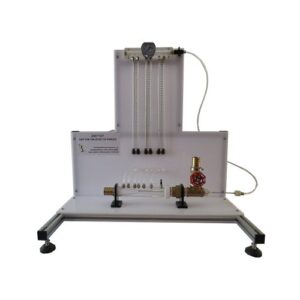ATB221018AS06 Aeration Equipment Educational Equipment Fluids Engineering Training Equipment
INTRODUCTION
In its broadest sense, aeration is the process by which the contact area between water and air is increased, either by natural means or mechanical devices. However, the common use in water work has given the term a more limited character, referring specifically to the use of mechanical devices. In this sense, aeration is defined as a method of treatment rather than the mere modification of the natural conditions of the water at the source of supply.
Oxygen transfer by aeration is a unitary operation that plays a major role in the biological processes of wastewater treatment. In water treatment plants the highest energy consumption is associated with the aeration system of the biological treatment. This makes studies related to aeration systems to improve their efficiency important, since they can contribute to a notable decrease in the energy costs of the treatment plant.
The Aeration Unit is a demonstration unit of the water aeration process to mainly eliminate odors and tastes from the water. It allows the study of the oxygen transfer characteristics by means of different air diffusion systems, as well as the study of the mixing process.
GENERAL DESCRIPTION
The Aeration Unit, allows the study of the oxygen transfer characteristics of diffused air systems and the physical and chemical parameters which influence oxygenation capacity and demonstrates the water aeration process which, mainly, eliminates smell and taste from water.
The Aeration Equipment unit also allows the study of the mixing and agitation processes in order to familiarize the student with the different types of agitators.
The main component of the unit is the central tank where the liquid subjected to study will be poured. An air pump, located underneath the tank, injects air in the tank. The air-injection tube passes previously traverses a device that measures and control the injected air, allowing the control of the volume of air that is allowed into the tank. After the air flow controller, the air is led through a flexible tube to the upper inlet of the tank. There, three different air outlets can be connected, in order to disperse the air in different ways (three type of diffusers are supplied).
On the other hand, there is a stirrer, with variable speed control, in the middle of the tank. The main part of the stirrer is a motor that makes it turn inside the tank. The unit includes different types of agitators of different size.
There is an oxygen meter to measure the oxygen dissolved in the water and a temperature meter.
The tank is made of a transparent material to facilitate the observation of the mixing process. There covers to avoid splashes.
SPECIFICATIONS
Bench-top unit.
Anodized aluminum frame and panels made of painted steel.
Main metallic elements made of stainless steel.
Diagram in the front panel with distribution of the elements similar to the real one.
Unit to study in the stirred tank mixing and gas exchange.
Open tank, capacity: 28 l.
Stirrer with variable speed control.
Agitators: they are the elements in charge of the agitation of the fluid, and they can be of different shapes and sizes:
Two blades agitators, diameters: 100 mm and 50 mm.
Two propeller agitators, diameters: 100 mm and 50 mm.
Two turbine agitators, diameters: 100 mm and 50 mm.
The propeller agitators are used for mixing with viscosity higher than 2000 cp.
Air pump.
Air flow meter, range: 0.4 – 5 l/min.
Three type of diffusers to sparge a gas: sparger tube, disk airstone and single airstone.
Oxygen meter, range: 0 – 50 mg/l. Oxygen probe length: 300 mm.
Temperature meter, to obtain the tank temperature, range: -19.9 – 149.9 °C (0.1 °C).
Control panel:
Lamp.
Automatic differential.
General switch.
Compressor switch.
Stirrer switch.
Cables and Accessories, for normal operation.
– Dimensions: 600 x 700 x 850 mm approx. (23.62 x 27.55 x 33.46 inches approx.)
– Weight: 50 Kg approx. (110 pounds approx.)











